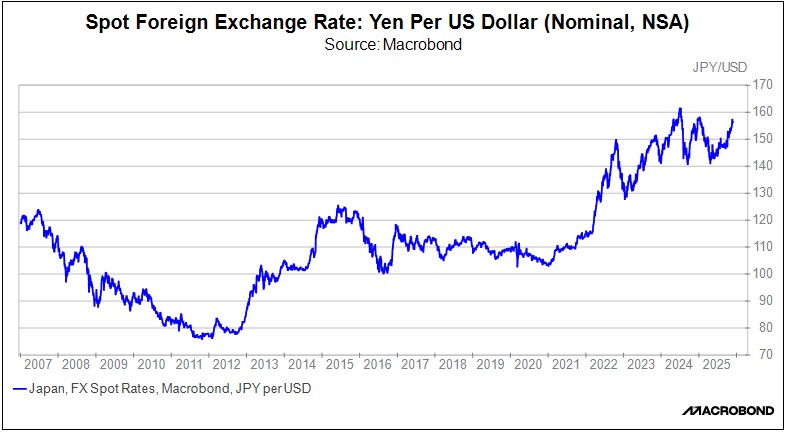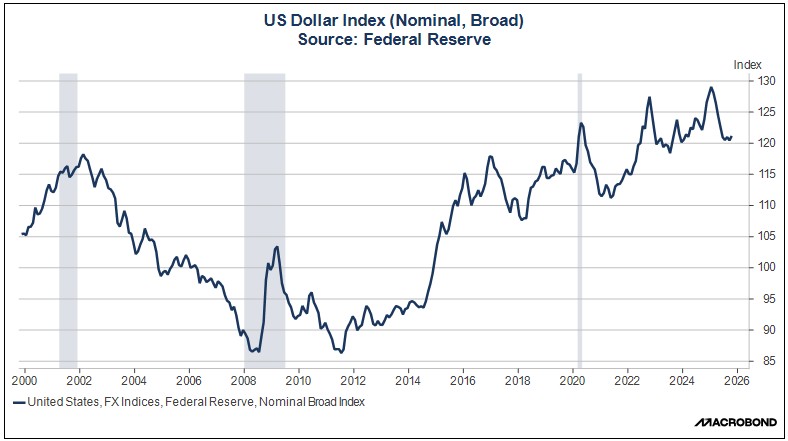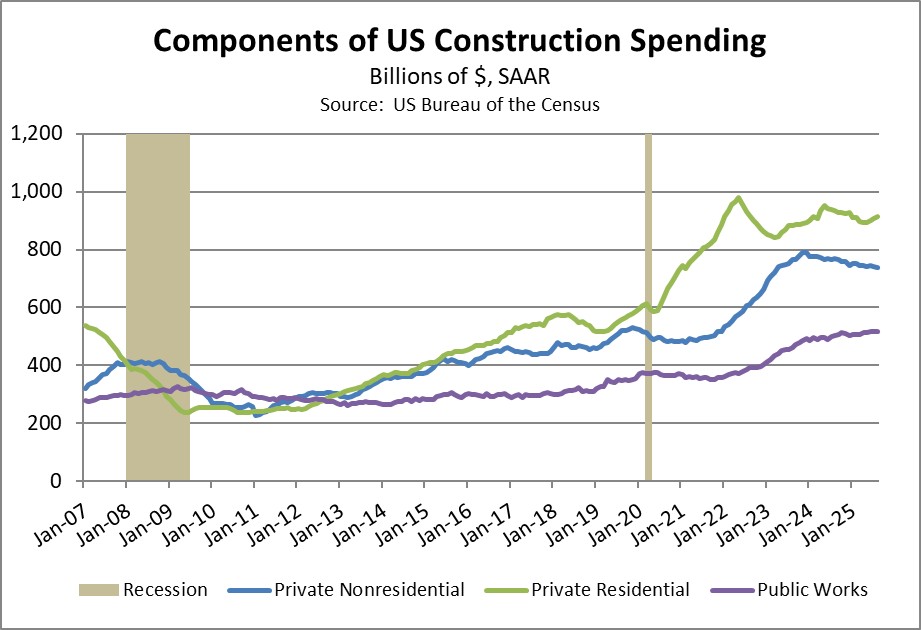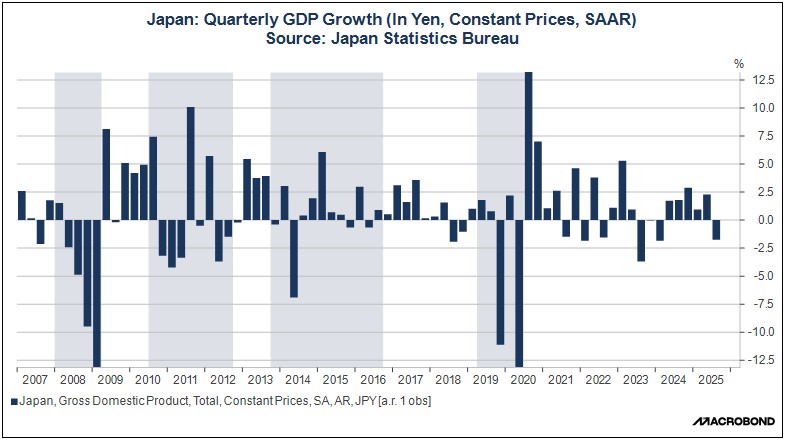by Patrick Fearon-Hernandez, CFA, and Thomas Wash
[Posted: 9:30 AM ET] | PDF
Our Comment today opens with the latest example of how building tensions between China and Japan have boosted the risk of conflict between the two countries. We next review several other international and US developments with the potential to affect the financial markets today, including key developments in the US artificial intelligence and air travel industries and a potential risk to the Italian central bank’s independence.
China-Japan: Amid heightened tensions caused by Japanese Prime Minister Takaichi’s recent comments that Tokyo would intervene militarily if China tried to blockade Taiwan, Japan said two Chinese coast guard patrol ships entered Japan’s territorial waters around the disputed Senkaku Islands in the East China Sea today and only left after being chased away by Japanese coast guard vessels.
- The incident is a reminder that the new tensions pose some risk of a potential military conflict between China and Japan.
- Of course, that in turn would risk drawing in the US and perhaps its other allies, all of which would likely cause global economic disruptions and weigh on global financial markets.
US Artificial Intelligence Industry: In the latest examples of circular investment in the AI space, chip giant Nvidia yesterday said it will invest $2 billion in chip design software maker Synopsys, one of its customers. Separately, AI model developer OpenAI said it will help fund startup investment vehicle Thrive Holdings, which was established by Thrive Capital, an investor in OpenAI. The deals are likely to further raise concerns about circular investment flows driving up valuations in the sector and helping create a bubble that will at some point pop.
US Air Travel Industry: The Transportation Security Administration yesterday said it will start charging a $45 fee to travel on a domestic flight without a Real ID form of identification starting February 1. The fee would have to be paid in advance and would be valid for 10 days, after which another fee would be charged. The purpose of the charge is to cover enhanced biometric screening for those without Real ID. The new rule could potentially cause major disruptions to the airlines if people continue to put off getting a Real ID.
US Cryptocurrency Market: Leading cryptocurrency bitcoin yesterday lost some 6% of its value, marking its worst day since mid-2021 and leaving the asset’s price below $86,000. Other key cryptocurrencies and related stocks have also sharply depreciated in recent weeks. The market rout reflects growing concern about market concentration, technical issues, and reduced enthusiasm among investors. Just as important, the rout appears to have stemmed in large part from rising bond yields in Japan and other developed markets.
US Commercial Real Estate Market: The Wall Street Journal today carries a useful article showing how commercial properties such as office and apartment buildings are perhaps the only major US asset class that is fairly valued right now. The article examines whether those fair prices would help make the asset class a relatively safe place for investors to hide in the event of a market downturn for other, high-flying assets classes, especially now that the commercial real estate market is starting to show nascent signs of a rebound.
Global Bond Market: After Bank of Japan Governor Ueda yesterday hinted at another hike in his central bank’s benchmark interest rate, bond prices fell not only in Japan but also in key developed countries. The yield on the US’s 10-year Treasury note jumped to 4.092%, while the yield on Germany’s 10-year government bonds jumped to 2.756%. The market action appears to reflect growing concern about government debt burdens. As noted above, rising government bond yields are likely to push down the value of riskier, non-yielding assets.
Eurozone: The November consumer price index was up 2.2% from the same month one year earlier, unexpectedly accelerating from the 2.1% rise in the year to October. That means eurozone inflation has now been above the European Central Bank’s target of 2.0% for three straight months. The acceleration stemmed in part from a jump in German prices and continued high services inflation. The figures will help solidify expectations that the ECB will keep its benchmark interest rate steady at its upcoming December policy meeting.
Italy: Prime Minister Meloni’s right-wing coalition is pushing a parliamentary bill declaring that, “the gold reserves managed and held by the Bank of Italy belong to the Italian people.” The central bank sees its gold reserves — the world’s third-largest at 2,452 tons — as a foundation of its credibility, but observers fear that declaring the gold as the people’s property might tempt the government to force its sale to fund fiscal spending. The move is therefore an example of how some major governments are chipping away at central bank independence.
United Kingdom: The Bank of England today said it will roll back the stringent capital rules it imposed on banks following the Global Financial Crisis. Under the new requirements, the institution’s benchmark ratio of capital to risk-weighted assets will fall to 13% from 14%. The change is expected to encourage British banks to lend more and potentially return more profits to investors in the form of dividends and share buybacks. It is also expected to encourage the ongoing efforts toward a similar cut to bank capital requirements in the US.
India: New Delhi yesterday ordered that all smartphones sold in the country come preloaded with a government-developed cybersecurity app that would give officials access to the phone’s call log, memory, and camera. The rule is likely to generate pushback by US cellphone giants such as Apple and Google, potentially putting them into conflict with the government and risking their access to the Indian market.








